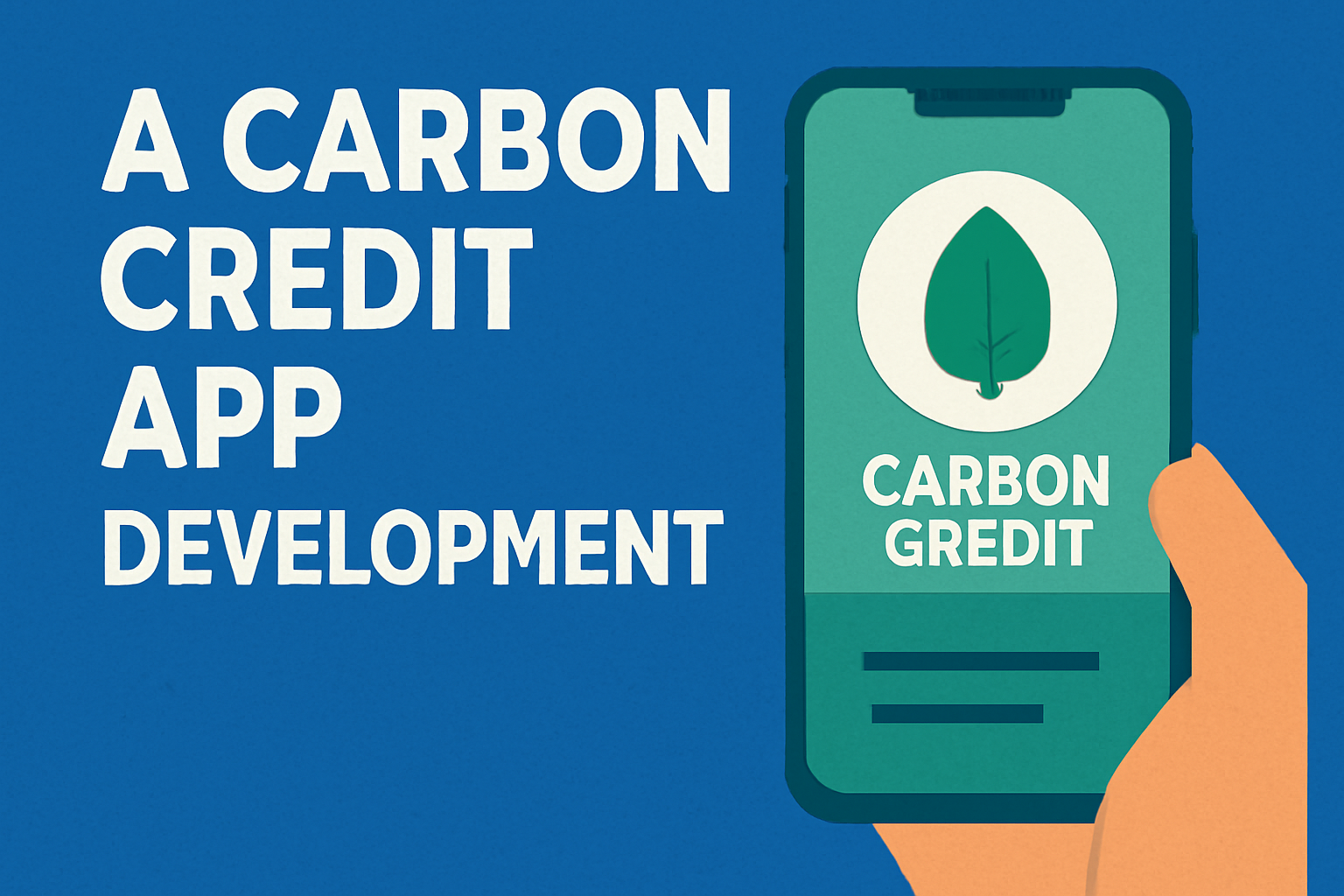The fight against climate change has become a shared global mission. From governments and corporations to individuals and grassroots movements, everyone is searching for practical ways to reduce carbon emissions. Carbon credits have emerged as a powerful instrument in this
battle, allowing users to offset their emissions by investing in eco-friendly projects. To make this process simple, accessible, and trustworthy, carbon credit app development is now more important than ever.Carbon credit apps allow users to calculate their carbon footprint, purchase and manage offsets, and track their environmental progress. These platforms bring transparency to carbon markets while educating and empowering users to make greener choices. Whether you’re building a consumer-facing tool or an enterprise-grade ESG solution, this guide will help you understand the core features, development process, technologies, costs, and future opportunities in the space.
Essential Features in Carbon Credit App Development
Personalized User Onboarding and Profile Setup
Users should be able to sign up with ease using mobile, email, or social logins. Each profile should track personal or company carbon emissions, purchased credits, project support history, and overall climate impact.
Carbon Footprint Estimation Tool
Offer an intuitive calculator that estimates emissions from daily activities or business operations. Categories may include travel, electricity, waste, and manufacturing. Use real-time data integrations to keep estimates accurate.
Verified Carbon Credit Marketplace
Provide a marketplace that lists verified carbon credits sourced from global projects. Let users filter credits by certification body (like VCS or Gold Standard), project type, country, and price. Include full transparency with project descriptions, impact metrics, and traceable purchase histories.
Blockchain Integration for Trust and Traceability
Use blockchain to ensure each credit transaction is unique and verifiable. Smart contracts can automate the issuance, retirement, and transfer of carbon credits. This prevents fraud and double-counting, building trust among users and regulators.
Visual Dashboards and Impact Reports
Create dashboards that show users how much CO₂ they’ve offset, projects they’ve supported, and how close they are to sustainability goals. For companies, offer downloadable ESG reports in compliance with regulatory standards.
Payment Integration with Global Support
Enable users to purchase carbon credits using multiple methods—credit/debit cards, digital wallets, or cryptocurrencies. Ensure transactions are secure and compliant with regional financial laws.
Alerts and Eco-Friendly Engagement
Use push notifications to remind users when new credits are available, offer sustainability tips, or celebrate offset milestones. You can also gamify the experience with challenges, badges, or group competitions.
Advantages of Carbon Credit App Development
-
Easy access to verified environmental projects
-
Real-time carbon tracking for individuals and businesses
-
Full transparency using blockchain-based verification
-
Scalable platform for global audiences
-
Supports regulatory compliance and ESG reporting
Cost of Developing a Carbon Credit App
The cost of carbon credit app development can vary based on your app’s complexity, tech stack, and integration requirements. Here’s a general estimate:
| App Tier | Key Features | Estimated Cost |
|---|---|---|
| Basic | Carbon calculator, credit purchase, payment integration | $25,000 – $45,000 |
| Mid-Range | Credit marketplace, dashboards, admin panel | $50,000 – $90,000 |
| Advanced | Blockchain integration, AI analytics, enterprise ESG reports | $100,000 – $160,000+ |
Ongoing maintenance and updates typically cost 15–20% of the total development annually.
Step-by-Step Development Process
1. Research and Planning
Start by identifying your target audience—corporate, government, or general users—and the value your app will offer. Study competitors and choose which carbon registries or data providers you’ll work with.
2. UI/UX Design
Design simple, clean interfaces that allow users to easily track emissions, buy credits, and view progress. Accessibility and user flow are critical for engagement.
3. Backend and Frontend Development
Develop secure APIs, databases, and logic for carbon tracking, credit management, and analytics. Use scalable cloud infrastructure to support future growth.
4. Blockchain and API Integration
Choose the right blockchain (Ethereum, Hyperledger, etc.) for credit traceability. Integrate third-party APIs for payment, location data, and project validation.
5. Quality Assurance and Testing
Run functional, security, and performance tests across all devices. Include both manual and automated testing for robust reliability.
6. Launch and Marketing
Deploy the app to app stores and create a marketing plan focused on sustainability communities, eco-conscious users, and corporate partners.
Tech Stack Recommendations
-
Frontend: Flutter, React Native
-
Backend: Node.js, Django, Express.js
-
Database: PostgreSQL, MongoDB
-
Blockchain: Ethereum, Polygon, Hyperledger
-
Hosting: AWS, Google Cloud, Azure
-
Payments: Stripe, Razorpay, Coinbase Commerce
Monetization Strategies for Your Carbon Credit App
-
Transaction Fees: A small commission on each credit sold or traded
-
Subscriptions: Offer advanced reporting, analytics, or corporate dashboards under monthly plans
-
Sponsored Projects: Promote specific environmental projects within the marketplace
-
Enterprise Packages: Sell bulk offsetting solutions to corporations and institutions
Why Choose Idea Usher for Carbon Credit App Development?
Idea Usher is a leader in carbon credit app development, combining cutting-edge technology with deep industry insight. Their team specializes in building secure, scalable apps that integrate carbon footprint tools, blockchain verification, and global payment systems.
With over 500,000 hours of development experience and a passion for sustainability, Idea Usher helps startups, enterprises, and NGOs launch apps that drive real-world impact. From ideation to deployment, they offer full-stack solutions tailored to your goals.
Whether you’re building a tool for personal carbon offsetting or a platform for enterprise ESG compliance, Idea Usher ensures your app is future-ready, user-friendly, and built for global reach.
Conclusion: Launch Your Carbon Credit App Today
Climate change is no longer a future threat—it’s a present challenge. Tools like carbon credit apps give individuals and organizations the power to take action, reduce emissions, and support impactful projects. With a growing demand for transparency and accountability, there’s never been a better time to invest in carbon credit app development.
By building a platform that simplifies carbon tracking and empowers users to offset emissions confidently, you’re not just creating a product — you’re contributing to a global solution.
Ready to make your idea real? Partner with Idea Usher and bring your sustainable tech vision to life.
